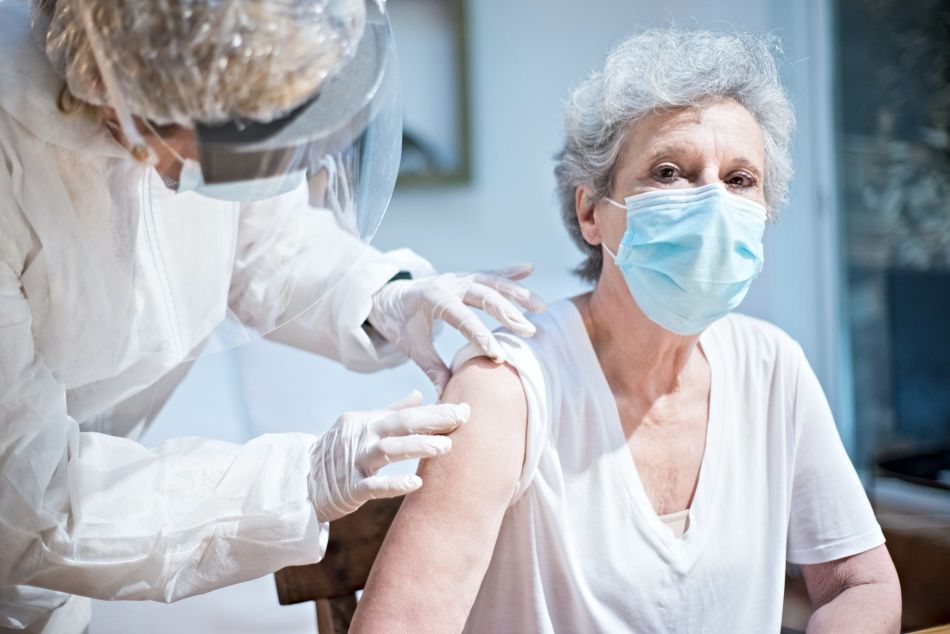To Flu Shot or Not
Shilo Zylbergold | Best Medicine

image by: Kampus Production
The best thing about getting a flu shot is that you never again need to wash your hands. That's how I see it - Chuck Palahniuk
It’s time once again to answer that age old question: to flu shot or not. Should we roll up our sleeves (or in some cases, unbuckle our belts to lower our pants) and suffer a moment or two of needle pain in order to avoid the possibility of coming down with a much more serious and sometimes deadly case of influenza? Every year, not long after we move the clocks back an hour and finally wash off the last of the Halloween face makeup, we are faced with this nagging dilemma.
How necessary is this flu vaccine? Let’s weigh the pros and cons. Everywhere I look in the mainstream media, all I can see is that I would be a fool not to get the shot. After all, I am pushing seventy, have asthma, irregular heartbeat, and a terminal disease which puts me in the highest “at risk” demographic for catching the flu virus.
On the other hand, what self-respecting virus would want to get stuck in a wreck of a body like mine? The thought of having to spend even a nanosecond or two in this sorry excuse for a human host like me should be humiliating for an influenza bug that only a century ago almost wiped out civilization.
Nevertheless, the flu virus doesn’t seem to have a whole lot of pride and will take what it can get. In fact, statistics show that up to 20 per cent of Americans are infected with influenza every year with almost a quarter of a million needing to be hospitalized. Of these, one in five will not leave the hospital alive. And that’s a lot of people, folks!
Given these odds, we must remember that “elders” like me are most susceptible to the disease because our immune systems, like most of the other working parts of our bodies, have diminished. It makes sense, therefore, to use every advantage made possible by modern medicine to protect ourselves from sliding down the slippery slope before our time has come.
In my glory days, back when I was young and invincible, I felt nothing could touch me. There was no reason to get immunized against the flu because I truly never caught any of the various bugs going around. Back then, I could walk into a sweat lodge teeming with lepers and iron lung aficionados and come out squeaky clean and bristling with good health.
Years later, as I grew a bit less stupid, I tried going the “holistic” route and considered myself a kind of “Mr. Natural”. What, flu shot? Not me. All I had to do was boost up my natural immunity without resorting to artificial methods that I thought were virtually untested over time. What chance did these viruses have when I was downing half a dozen cocktails a day of ginger tea steeped in a brew of equal parts turmeric, kombucha, kefir, kimchi, and matcha with just a dash of sauerkraut sprinkled on top?
Not wanting to take any chances, I enrolled in several exercise and movement workshops to increase my core strength and flexibility. If those little virus suckers were going to get to me, they were going to have to catch me first. Not bloody likely, what with me racing around between Feldenkrais, Nia movement, aquafit, jazzercise, kickboxing, hot yoga, and ballroom dancing classes.
However, now that I’ve become more sedentary and reflective, I’ve started to do the research necessary for older people to feel more in charge of their world. For instance, what are the processes that enable the influenza virus to pose such a threat to humanity?
To understand how the virus interacts with the body’s immune system, imagine yourself playing one of those late 70’s “old school” video games like Asteroids, Space Invaders, or Pacman.
Imagine the video game controlIer is in your hands. In the case of the influenza, the virus is either inhaled or transmitted directly by your fingers to the mucous membranes of your nose and eyes, and then into your throat. This is why you are always told to wash your hands well with hot, soapy water, especially after using the bathroom (or playing with the controller). Yes, the virus can be transmitted by somebody coughing or sneezing in your face, but can also be picked up when you lift a toilet seat or open a door handle. (If you are the kind of person who licks toilet seats, influenza is probably nature’s way of “culling the herd” as far as the human species goes.)
Once the intruder gets into the mucous membranes, it moves down your respiratory tract until it reaches the epithelial cells lining the airways. Here it binds to them and uses them as “zombies” to manufacture and generate its own viral proteins. These proteins then escape the infected cell and look for adjacent cells to repeat this sinister invasion. This is how the disease spreads. Think “Night of the Living Dead” by George Romero and you’ve got a pretty good picture of how gross the whole affair looks.
It is at this point that, simply put, the invading virus triggers some of the cells in your body’s normal immune system to “sense” that something is not right. Some of these defense cells, like macrophages and neutrophils, emit receptors that detect the presence of the virus. This is the body’s early warning system.
After this first stage of alert, you enter the second level of germ warfare wherein some hormone-like molecules called cytokines and chemokines are produced by the immune cells which ring the alarm that the defense system has been breached and infection is happening. The “all hands on deck” warning is sounded.
It’s time to bring out the heavy artillery. The combination of the cytokine and chemokine molecules (playing tag-team like the Lone Ranger and Tonto) throw into action the T-lymphocytes, specific white blood cells which are often referred to as Soldier Cells (Special Ops Unit) because they do most of the dirty work in defending against foreign bodies such as the influenza virus.
If all goes well, these T-lymphocytes rush to the lymph nodes around the throat and lungs. After a few days of direct action, they kill off the virus-infected cells and your body is on its way to recovery. Unfortunately, there is price to pay for the poor infected host (you). The presence of the soldier cells brings along pain and swelling in the lymph nodes and as a result creates lung damage. We are all too familiar with those familiar symptoms: fever, cough, sore throat, head and muscle aches, and total fatigue.
Now here comes the ironic part. The worst part of getting the flu is that almost all the nasty symptoms are caused by our own immune response to the virus. In essence, it’s like “friendly fire” or being shot in the back by your own troops.
Is there a definitive correct answer on whether to get a flu shot or not? It depends on who you ask. Your family doctor (if you are lucky enough to have one in these times of medical shortages) will probably advise you to play it safe and get the shot. On the other hand, your health food store pill pusher will warn you against such a reckless move. But either way you look at it, at the rate this little critter mutates, there is still no guarantee that you will not come down with it anyway. If so, everyone agrees there is no cure. Just stay home, get plenty of rest, and drink lots of fluids. Ginger-turmeric-kombucha-kefir-kimchi-matcha-sauerkraut cocktails anybody?
About the Author
Shilo Zylbergold lives on a small island somewhere in the southwest corner of British Columbia, Canada. He grows vegetables, teaches math, and is a columnist for a local paper. Send complaints to [email protected]


Introducing Stitches!
Your Path to Meaningful Connections in the World of Health and Medicine
Connect, Collaborate, and Engage!
Coming Soon - Stitches, the innovative chat app from the creators of HWN. Join meaningful conversations on health and medical topics. Share text, images, and videos seamlessly. Connect directly within HWN's topic pages and articles.









.jpg)






